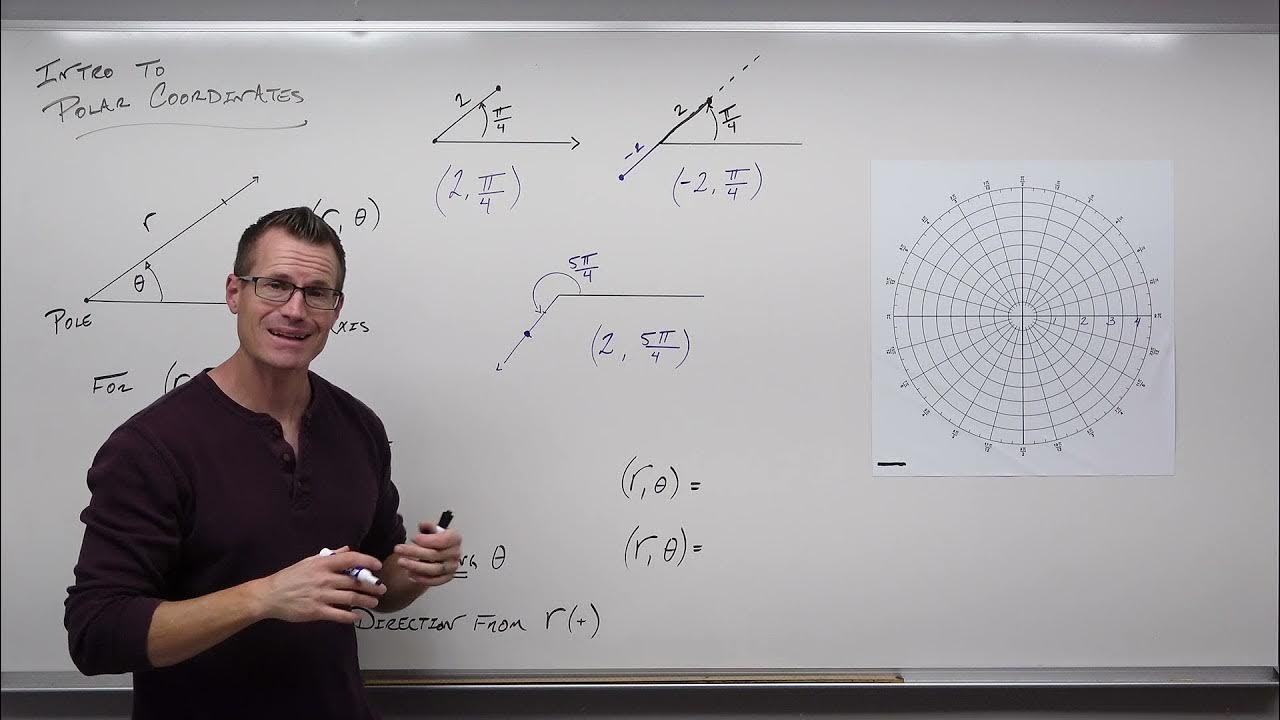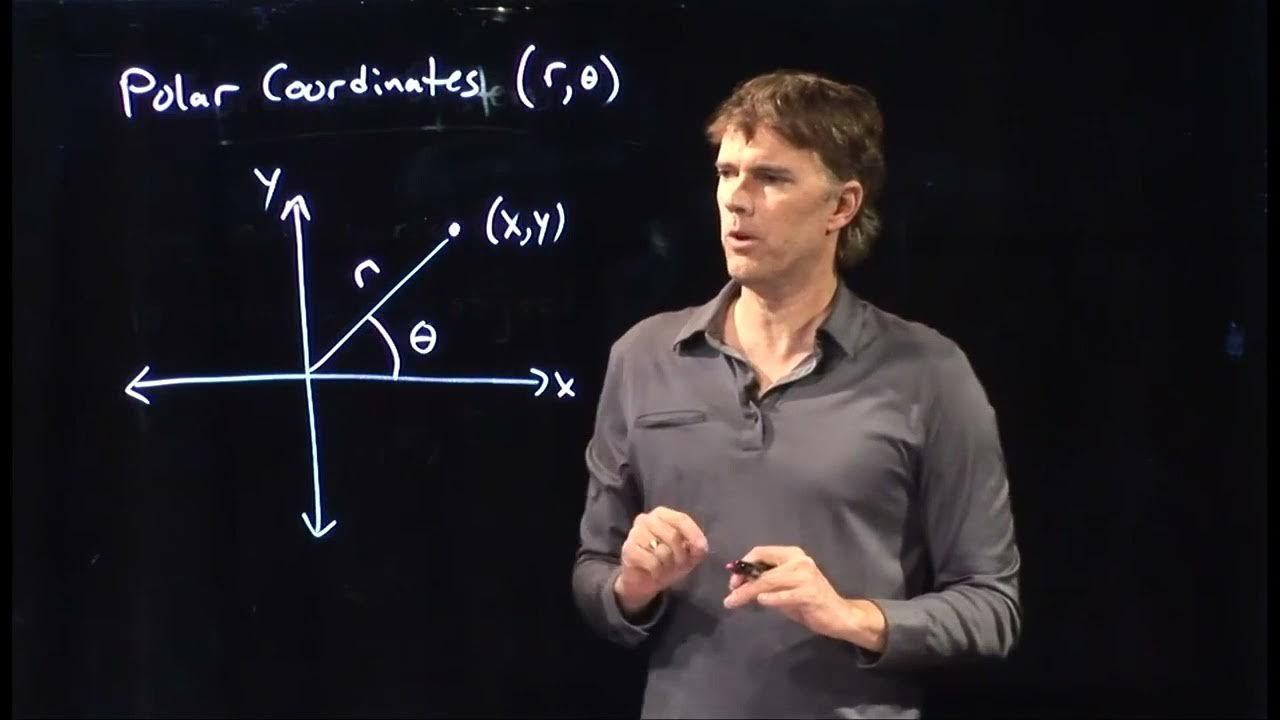Translations Reflections and Rotations - Geometric Transformations!
TLDRThis video script delves into the concepts of geometric transformations, focusing on translations, reflections, and rotations. It explains how to translate shapes by changing their x and y coordinates and how to reflect figures over the x-axis, y-axis, and the origin by altering the signs of these coordinates. The script also covers rotations, detailing how to rotate a figure 90, 180, or 270 degrees clockwise or counterclockwise and the effects these rotations have on the shape's position and orientation. The examples provided throughout the script are practical and serve to solidify the viewer's understanding of these fundamental geometric principles.
Takeaways
- 📐 Translation involves moving a graph or figure along the coordinate plane by a specified distance in a particular direction.
- 🔄 To translate a graph right, increase the x-values; to translate left, decrease the x-values; to translate up, decrease the y-values; to translate down, increase the y-values.
- 📍 When translating figures between quadrants, consider the direction and distance of the movement to determine the new quadrant location.
- 🤔 To find new coordinates after translation, add or subtract the translation values from the original coordinates accordingly.
- 🔄 Reflections can occur over the x-axis, y-axis, or the origin, changing the orientation of the figure while keeping its size and shape.
- 📐 For reflection over the x-axis, change the sign of the y-coordinate (x, -y).
- 📐 For reflection over the y-axis, change the sign of the x-coordinate (-x, y).
- 🔄 To reflect a figure over the origin, change the signs of both x and y coordinates (-x, -y).
- 🔄 Rotations can be 90, 180, or 270 degrees, and the direction (clockwise or counterclockwise) affects the final quadrant location of the figure.
- 📐 For a 90-degree rotation clockwise, switch the x and y coordinates and change the sign of the new y-coordinate (y, -x).
- 📐 For a 90-degree rotation counterclockwise, switch the x and y coordinates and change the sign of the new x-coordinate (-y, x).
- 🔄 A 180-degree rotation results in the figure being reflected across the origin, which can be achieved by changing the signs of both coordinates (-x, -y).
Q & A
What is the result of translating a circle from quadrant II five units to the right?
-The circle will move to the right side of the graph, likely ending up in quadrant I, with its x-values increased by five.
How does a translation five units down affect a graph and its points?
-Translating a graph five units down moves it downward, requiring the y-values of all points on the graph to be decreased by five.
If a figure in quadrant III is translated seven units to the right and five units up, in which quadrant will the graph end up?
-The graph will end up in quadrant I after the translation.
What are the new coordinates for point A (-4, 1) after a translation five units to the right and four units down?
-The new coordinates for point A will be (1, -3).
How do you reflect a figure over the x-axis?
-To reflect a figure over the x-axis, you multiply the y-coordinates of all points by negative one, keeping the x-coordinates the same.
What happens to a figure when it is reflected over the y-axis?
-When a figure is reflected over the y-axis, the x-coordinates of all points are multiplied by negative one, while the y-coordinates remain unchanged.
What are the coordinates of point B (-2, 3) after reflecting it over the x-axis?
-The coordinates of point B after reflection over the x-axis will be (2, -3).
How do you determine the new coordinates of a point when reflecting about the origin?
-To reflect a point about the origin, change the sign of both the x and y coordinates of the point.
What is the effect of a 90-degree clockwise rotation on a figure in quadrant I?
-A 90-degree clockwise rotation of a figure in quadrant I will move it to quadrant IV.
What transformation switches the coordinates of a point to (1, -5) from an original position of (5, 1)?
-A 90-degree counterclockwise rotation will switch the coordinates from (5, 1) to (1, -5).
What rotation results in the same effect as reflecting a graph across the origin?
-A rotation of 180 degrees, either clockwise or counterclockwise, will result in the same effect as reflecting a graph across the origin.
Outlines
📐 Introduction to Transformations
This paragraph introduces the concept of geometric transformations, focusing on translations, reflections, and rotations. It explains how translations involve shifting a shape horizontally or vertically, with specific examples of moving a circle from quadrant two to quadrant one by translating it to the right and down. The paragraph sets the stage for further exploration of transformations by providing a foundational understanding of how shapes can be moved and altered within a coordinate plane.
🔄 Translation of Points and Quadrants
The paragraph delves into the specifics of translating points and shapes within a coordinate system. It provides a step-by-step process of how to find the new coordinates of points A, B, and C when a shape is translated five units to the right and four units down. The explanation includes identifying the original quadrant and the new quadrant after translation, emphasizing the mathematical process of adding or subtracting values from the coordinates to achieve the desired transformation.
🔄 Reflections Over Axes
This section discusses reflections of shapes over the x-axis, y-axis, and the origin. It explains that reflecting over the x-axis involves changing the sign of the y-coordinate while keeping the x-coordinate the same. Conversely, reflecting over the y-axis involves changing the sign of the x-coordinate. The paragraph also introduces the concept of reflecting a shape over the origin, which involves changing the signs of both coordinates. The explanation is supported by examples and a brief overview of quadrants to contextualize the transformations.
🔄 Reflections Continued and Rotations Introduction
The paragraph continues the discussion on reflections, providing examples of reflecting shapes over the y-axis and the origin. It explains that reflecting over the y-axis changes the x-coordinate's sign while the y-coordinate remains unchanged. Reflecting over the origin results in both coordinates changing their signs. The paragraph then introduces rotations, specifically 90-degree clockwise and counterclockwise rotations, and how they affect the position of a shape within the quadrants. It uses a triangle as an example to illustrate the effects of these transformations.
🔄 Detailed Rotation Examples
This paragraph provides a detailed explanation of rotating shapes by 90 and 180 degrees, both clockwise and counterclockwise. It outlines the mathematical process for rotating points around the origin, including switching coordinates and changing their signs. The paragraph uses specific examples of points A, B, and C to demonstrate how their coordinates change with 90-degree clockwise and counterclockwise rotations. It also explains the effect of a 180-degree rotation, which is equivalent to reflecting a shape across the origin, and provides a method for such a transformation.
📚 Algebra Course Promotion
The final paragraph shifts focus from geometric transformations to promote an algebra course available on Udemy. It provides a URL for potential students to access the course and gives an overview of the course content, covering a wide range of algebra topics from basic arithmetic to complex numbers and conic sections. The paragraph emphasizes the interactive nature of the course, with quizzes and video lessons, and encourages viewers to check it out for further mathematical education.
Mindmap
Keywords
💡Transformations
💡Translations
💡Reflections
💡Rotations
💡Quadrants
💡Coordinates
💡Graphs
💡Symmetry
💡Line of Symmetry
💡Point
Highlights
Introduction to transformations, translations, reflections, and rotations.
Translation of a circle from quadrant II to the right by 5 units and down by 5 units.
Translating a figure from quadrant III to the right by 7 units and up by 5 units, resulting in quadrant I.
Example of translating points A, B, and C from quadrant IV to quadrant I by shifting right and down.
Instructions for a practice exercise involving shifting points A, B, C, and D left by 7 units and down by 6 units.
Explanation of reflections over the x-axis, resulting in a flip from quadrant I to IV.
Process for reflecting a trapezoid from quadrant II over the x-axis to quadrant III.
Rule for reflecting over the x-axis: Multiply the y-coordinate by negative one.
Reflection of a triangle over the y-axis, changing from quadrant I to III.
Process for reflecting over the y-axis: Multiply the x-coordinate by negative one.
Reflection of a figure over the origin, changing quadrants and flipping the figure.
Rule for reflecting over the origin: Multiply both x and y coordinates by negative one.
Example of reflecting points A, B, and C about the x-axis with new coordinates.
Example of reflecting points A, B, C, and D about the y-axis with new coordinates.
Example of reflecting points A, B, and C about the origin with new coordinates.
Rotation of a triangle in quadrant I by 90 degrees clockwise to quadrant IV.
Rotation of a triangle in quadrant I by 90 degrees counterclockwise to quadrant II.
Rotation of a figure by 180 degrees, resulting in a reflection across the origin.
Detailed explanation of rotating points A, B, and C 90 degrees clockwise with new coordinates.
Detailed explanation of rotating points A, B, and C 90 degrees counterclockwise with new coordinates.
Rotation of points A, B, C, and D by 180 degrees with new coordinates.
Algebra course promotion with various topics covered and quiz availability.
Transcripts
Browse More Related Video

Introduction to Polar Coordinates (Precalculus - Trigonometry 36)

Introduction to Graph Transformations (Precalculus - College Algebra 14)

ANGLES IN A UNIT CIRCLE || PRE-CALCULUS

How To Graph Radical Functions & Determine The Domain and Range

Polar Coordinate System | Physics with Professor Matt Anderson | M3-02

REFERENCE ANGLES || PRE-CALCULUS
5.0 / 5 (0 votes)
Thanks for rating: